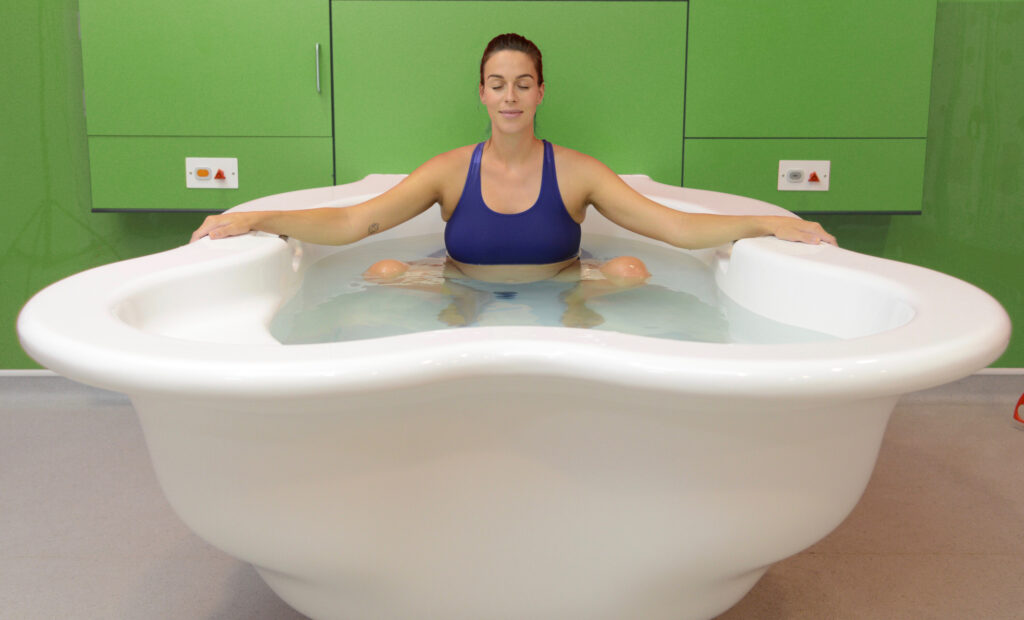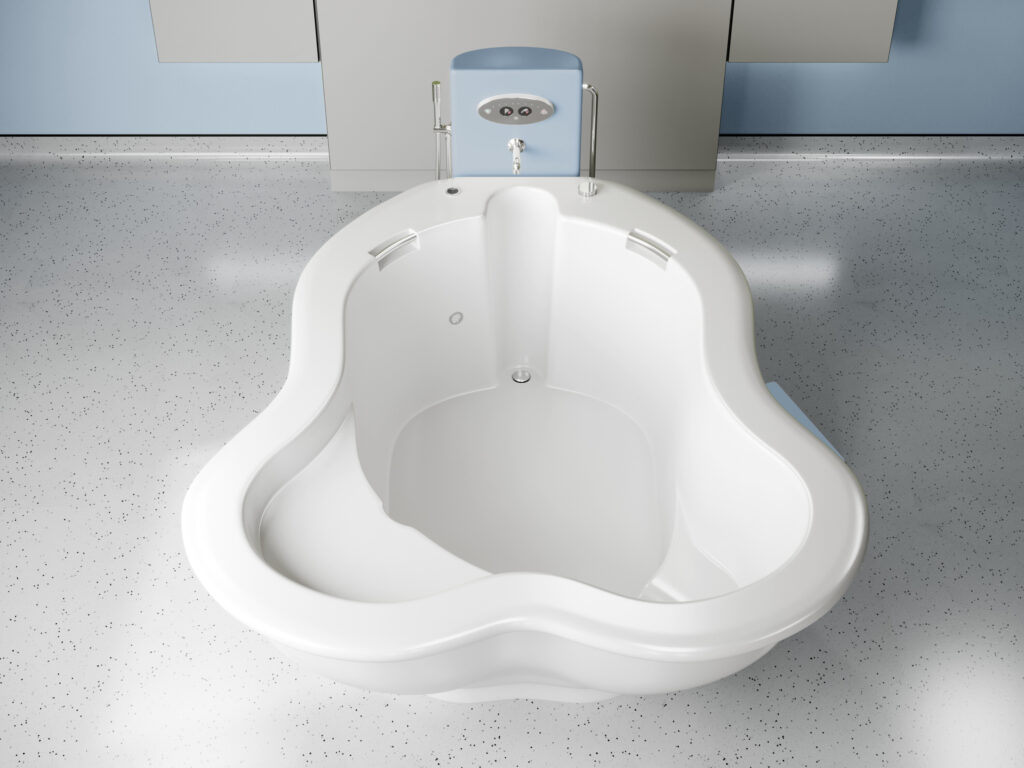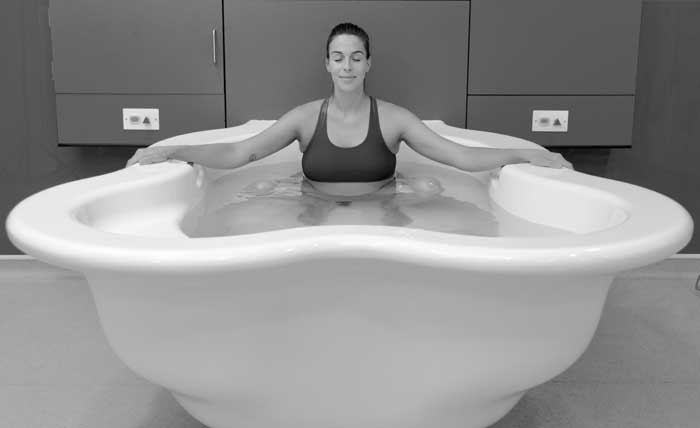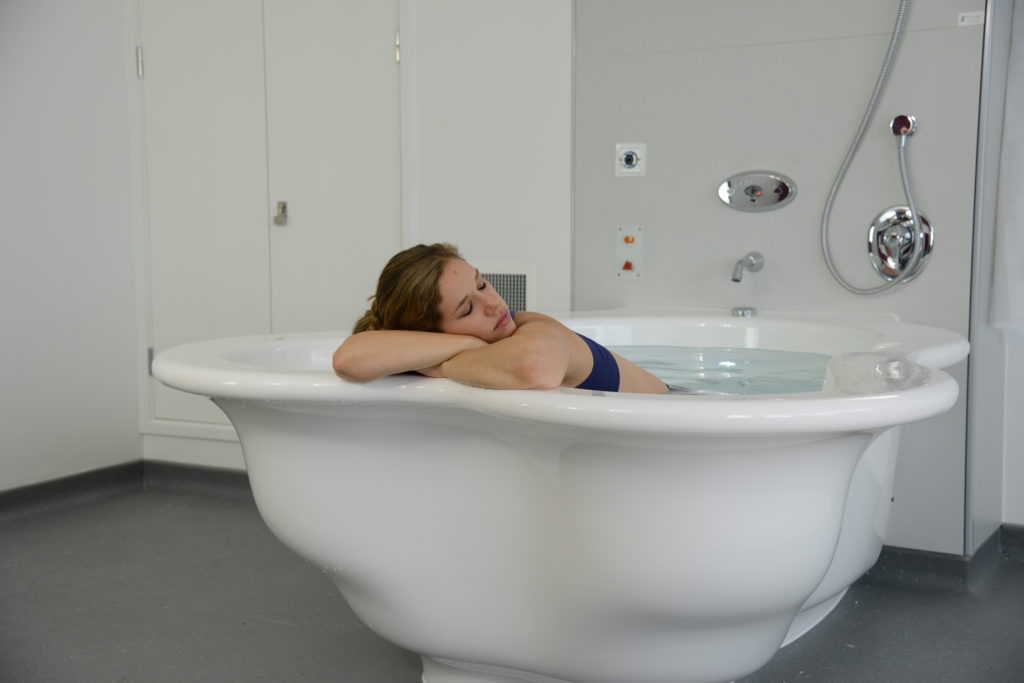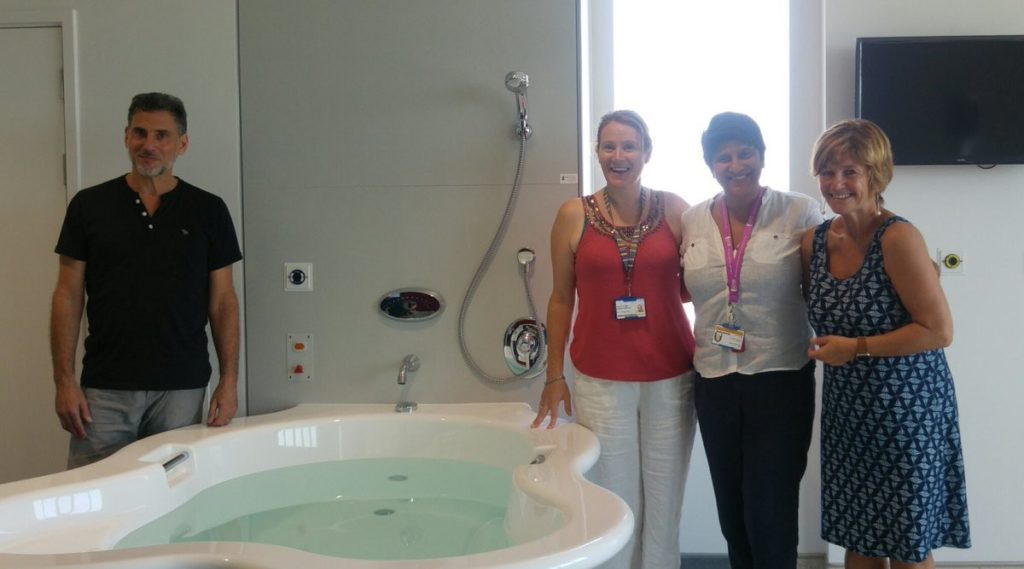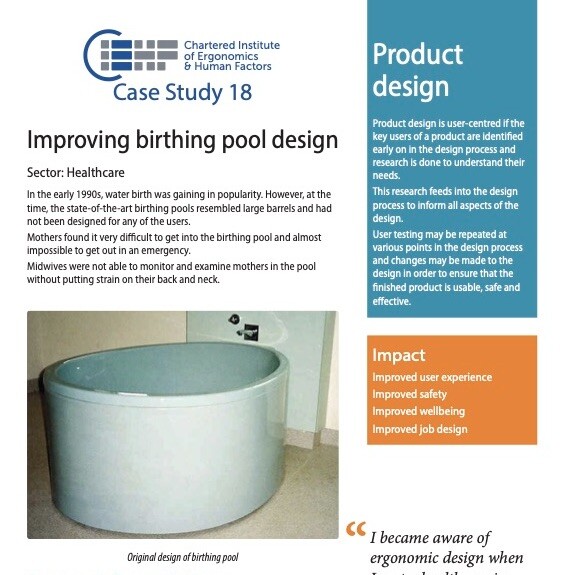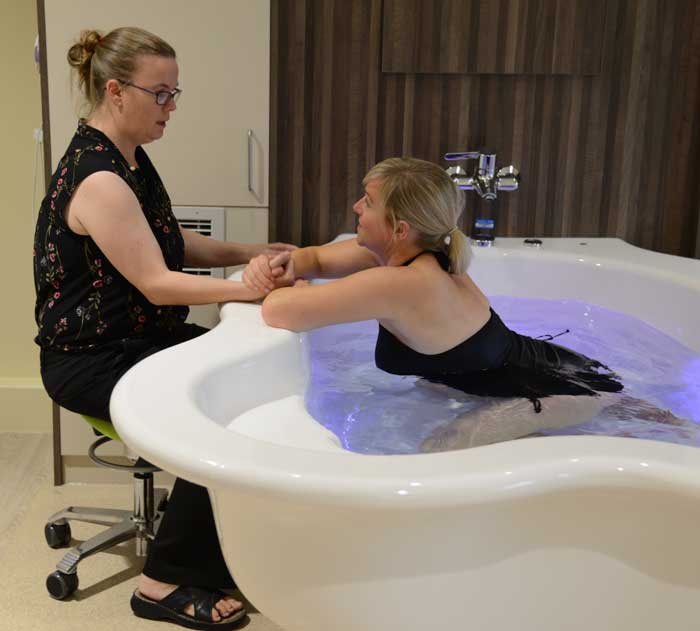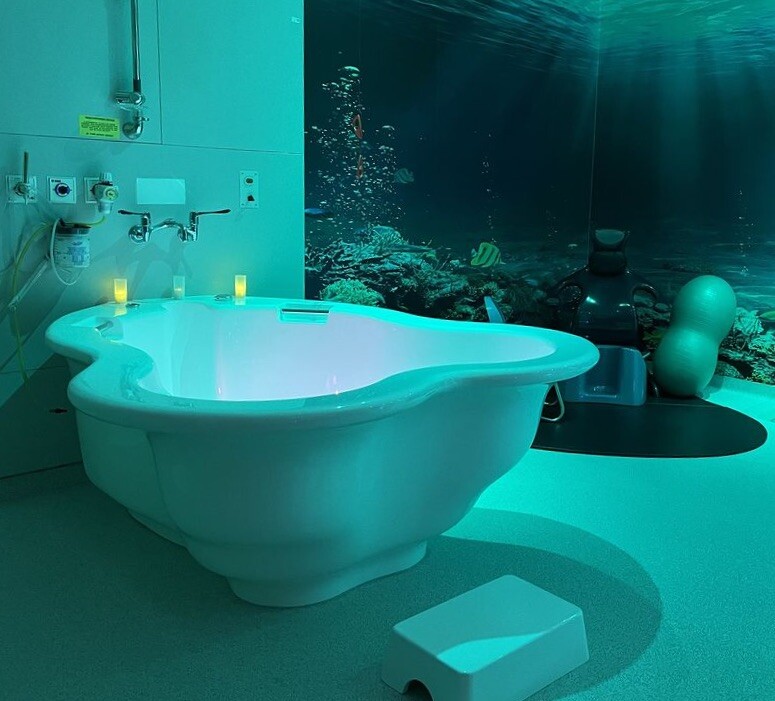When it comes to the creation and care of water birth facilities nothing is more important then Health and Safety.
Micro-organisms breed freely in warm moist environments and must be prevented from propagating.
The potential for water birth pools to be both a habitat and a delivery medium for harmful bacteria such as Pseudomonas and Legionella is well known.
We completely understand this and engineered our water birth pools to optimise safety, negate risk and deliver safer birthing environments.
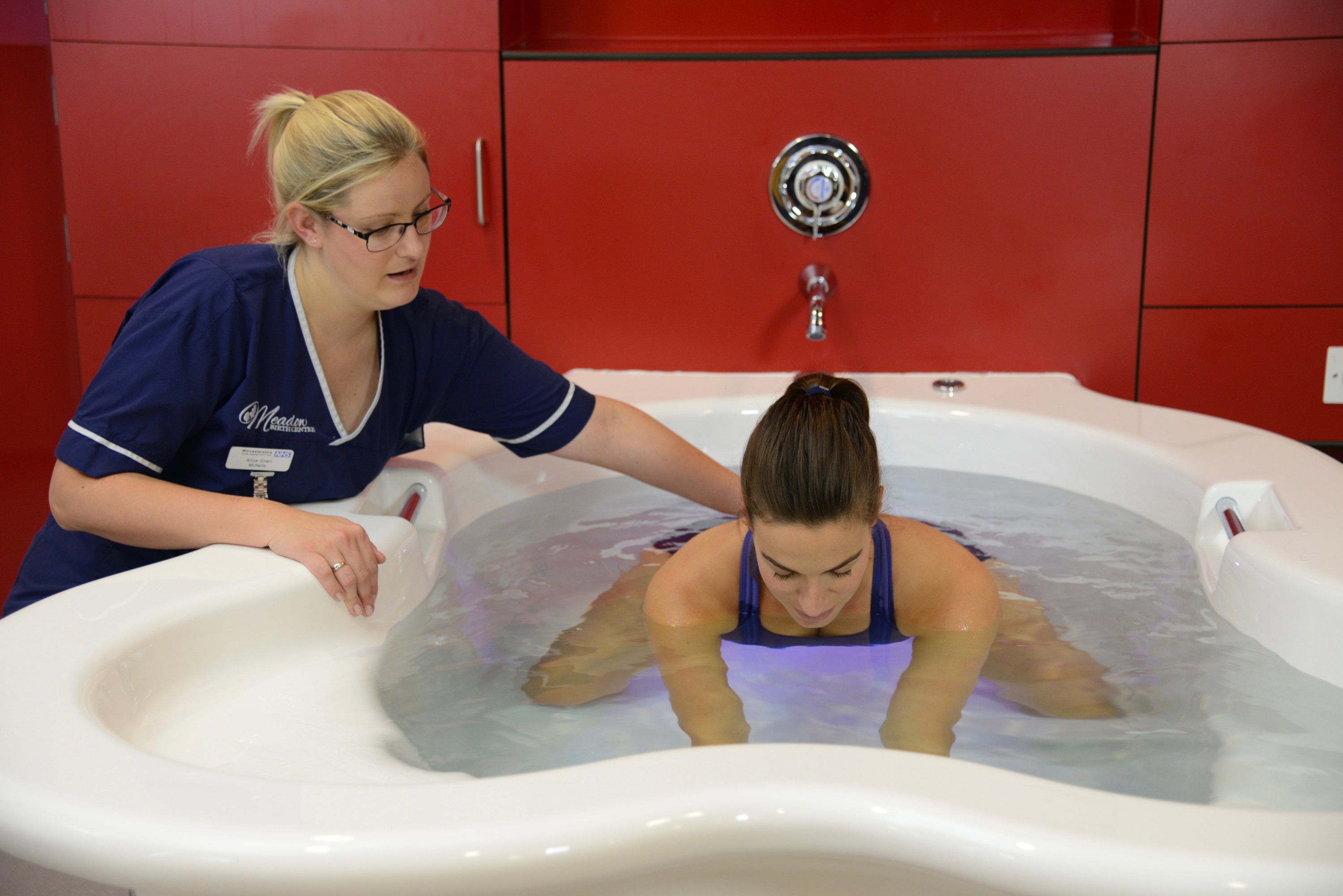
Seamless one-piece construction in Ficore combined with the minimum of fittings result in water birth pools of unparalleled hygiene and water safety.
Active Birth Pools are fabricated from proprietary material with unique qualities called Ficore® composite.
Ficore has much higher degree of strength, durability and resistance to bacteria when compared to fibreglass or acrylic.
Seamless, one-piece construction in Ficore® improves hygiene by denying bacteria the environment to grow.
The ultra-hard surface makes our water birth pools easier to clean and more resistant to bacteria.
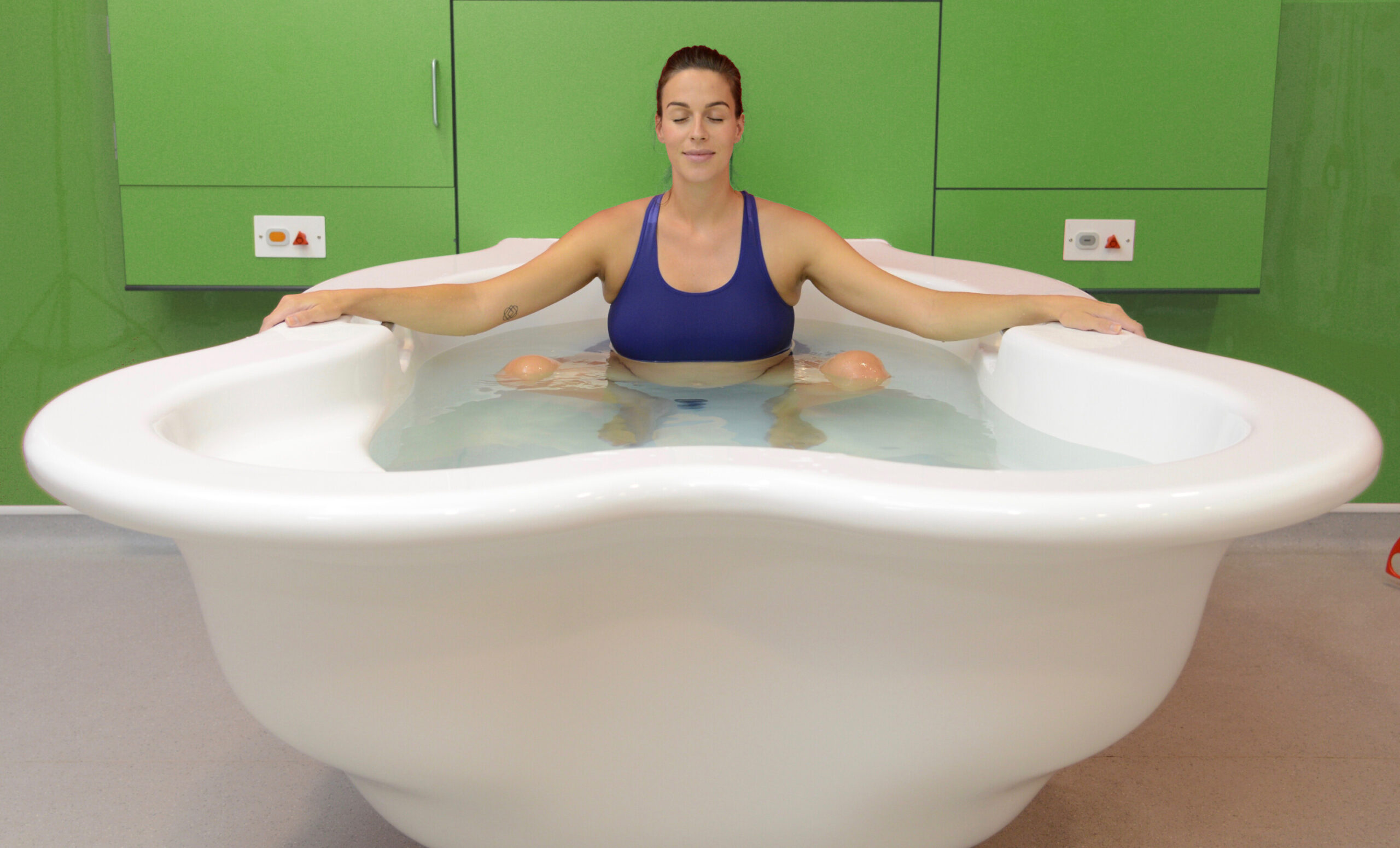
With Health Department Regulations as a guideline we have utilised intelligent design and a range of innovations to negate risk and maximise water safety.
In addition to the advantages that Ficore give our pools from a material perspective we need to look at the advantages it provides from an engineering and manufacturing perspective.
Ficore’s unique properties allow us to design our pools with flowing, organic forms that improve hygiene by facilitating more effective cleaning.
The super smooth finish and flowing contours optimise drainage and eliminate “dirt traps”.
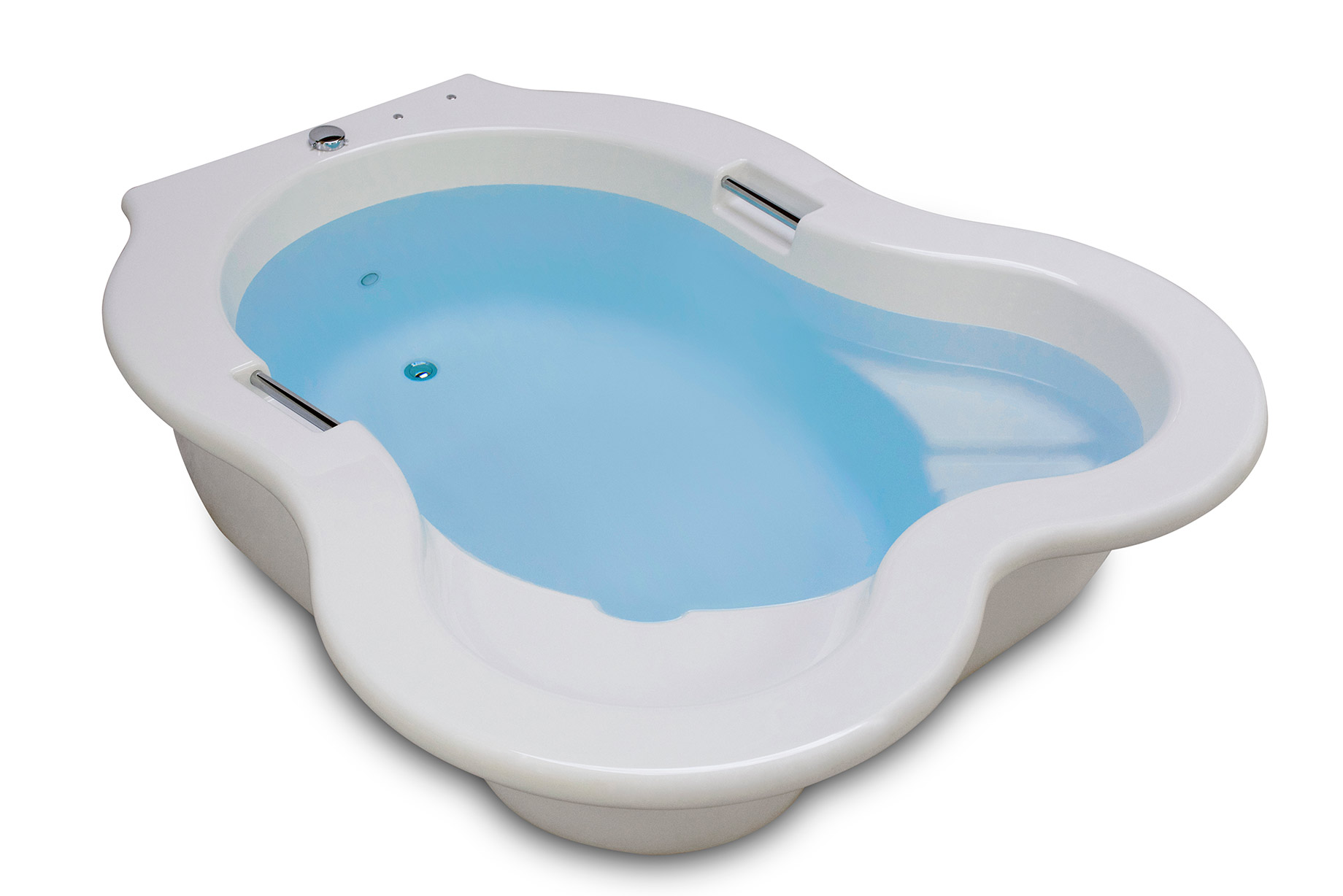
Hand grips
Our stainless steel hand grips, supplied by renown brassware manufacturer Samuel Heath are bonded directly into the pool
They are not surface mounted like on other birthing pools.
The bar is solidly sealed into the fabric of the pool with Ficore.
There are no gaps – there is no movement.
This make it impossible for moisture penetrate and for bacteria to breed
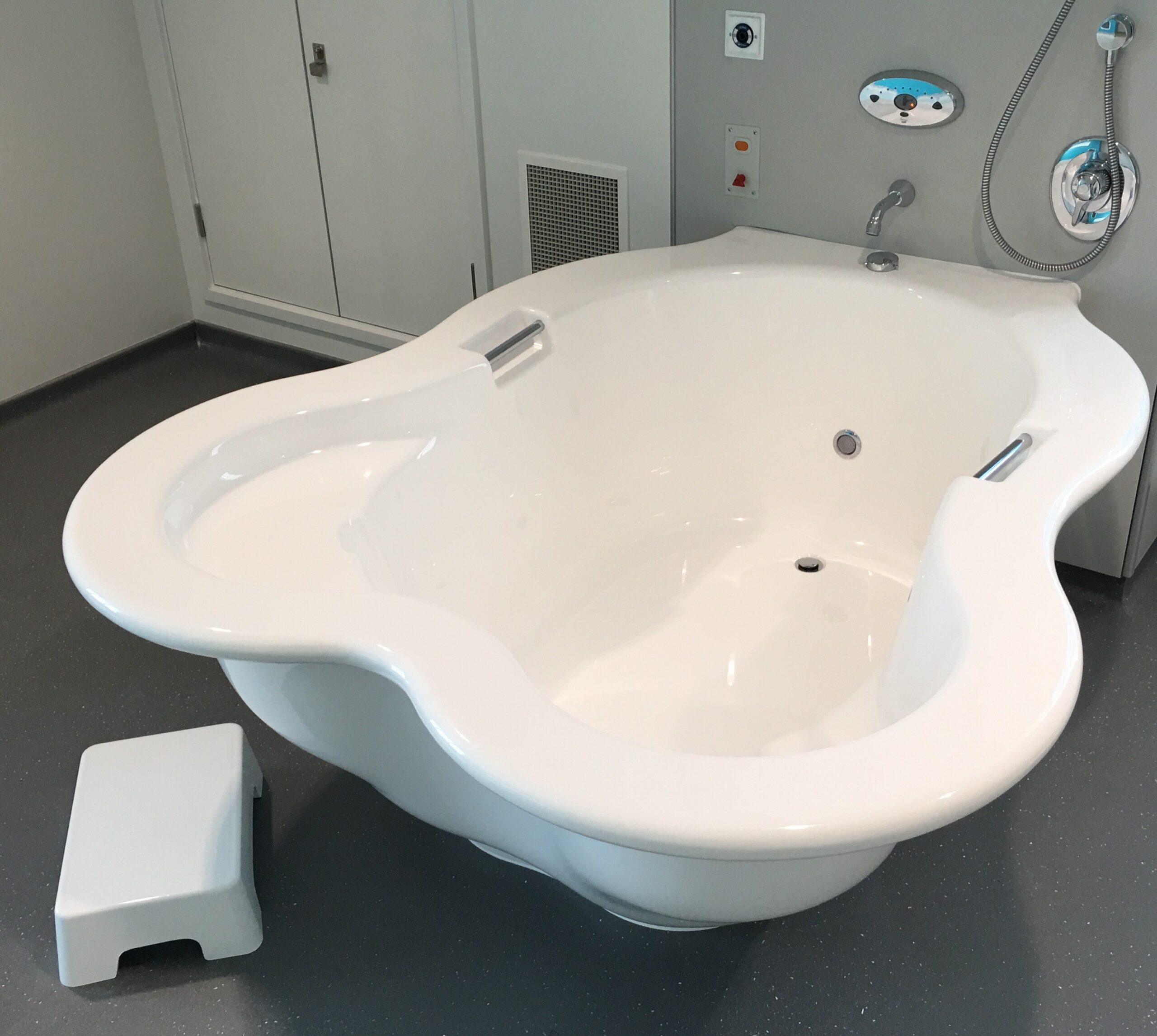
Drainage System
Our drainage is purpose designed and manufactured to the highest standards.
It has been a subject of interest of numerous investigations by infection control specialists, all of them who came back to use to give their approval.
The waste sits in a recess and is double sealed in with silicone for a water tight, bacteria resistant seal.
The stainless steel fittings are made from solid brass and won’t be damaged from use of of chlorides and other disinfectants.
The plug can be taken out and soaked in hypochlorite in between births.
The rim mounted control wheel can be easily removed for cleaning.
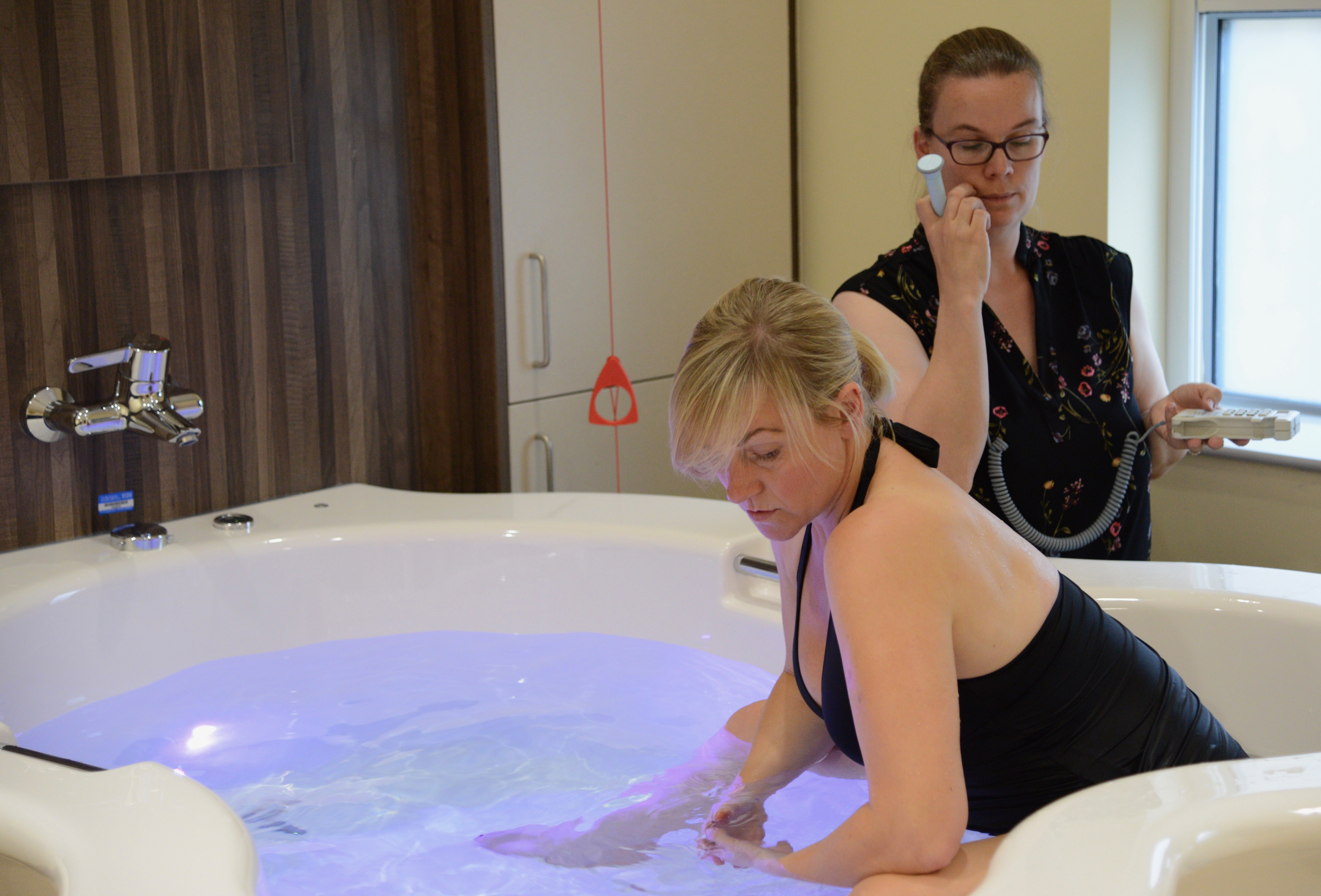
Multi-Colour LED Underwater Lighting
The internal light fitting fits flush to the sidewall, has a stainless steel bezel and is sealed in with silicone.
Due to the fact that the fittings are water tights and vertically mounted water cannot penetrate or build up.
The control switch on the rim is is also water tight and fully sealed.
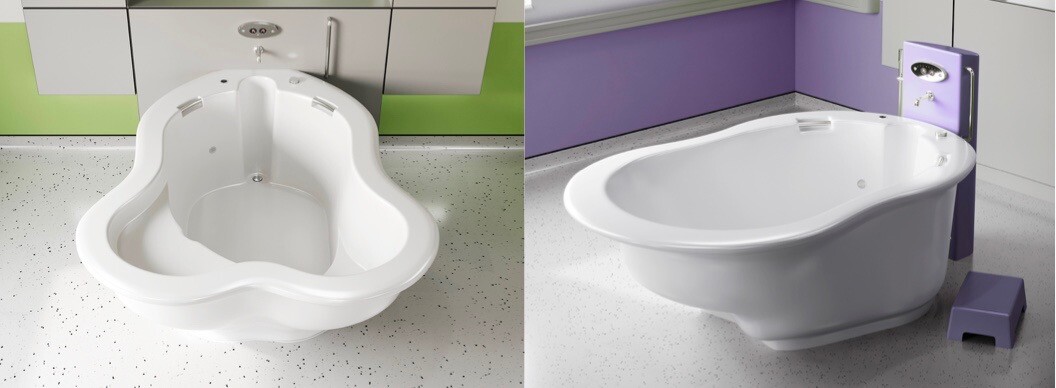
Taps and Showers
We do not supply taps but recommend 3/4″ thermostatic bath or bath/shower mixers like the Rada T3.
Taps are never mounted on the rim but on the wall or water column as shown above.
Spouts should be 25cm above the rim to prevent contact from pool water and to protect the mother from hitting her head.
Handheld showers are very useful for cleaning the pool but must be detachable so they can be removed while the pool is in use.
The Water Column
Freestanding water birth pools are becoming increasingly popular.
These installations typically present significant water safety and hygiene risks as rim mounted plumbing and fixtures provides the perfect breeding ground for micro-organisms to thrive.
For wall mounted installations the thermostatic taps, spout, handheld shower and grab rail are fixed to an IPS Panel in accordance with health department regulations.
For freestanding birthing pools a solution needed to be found.
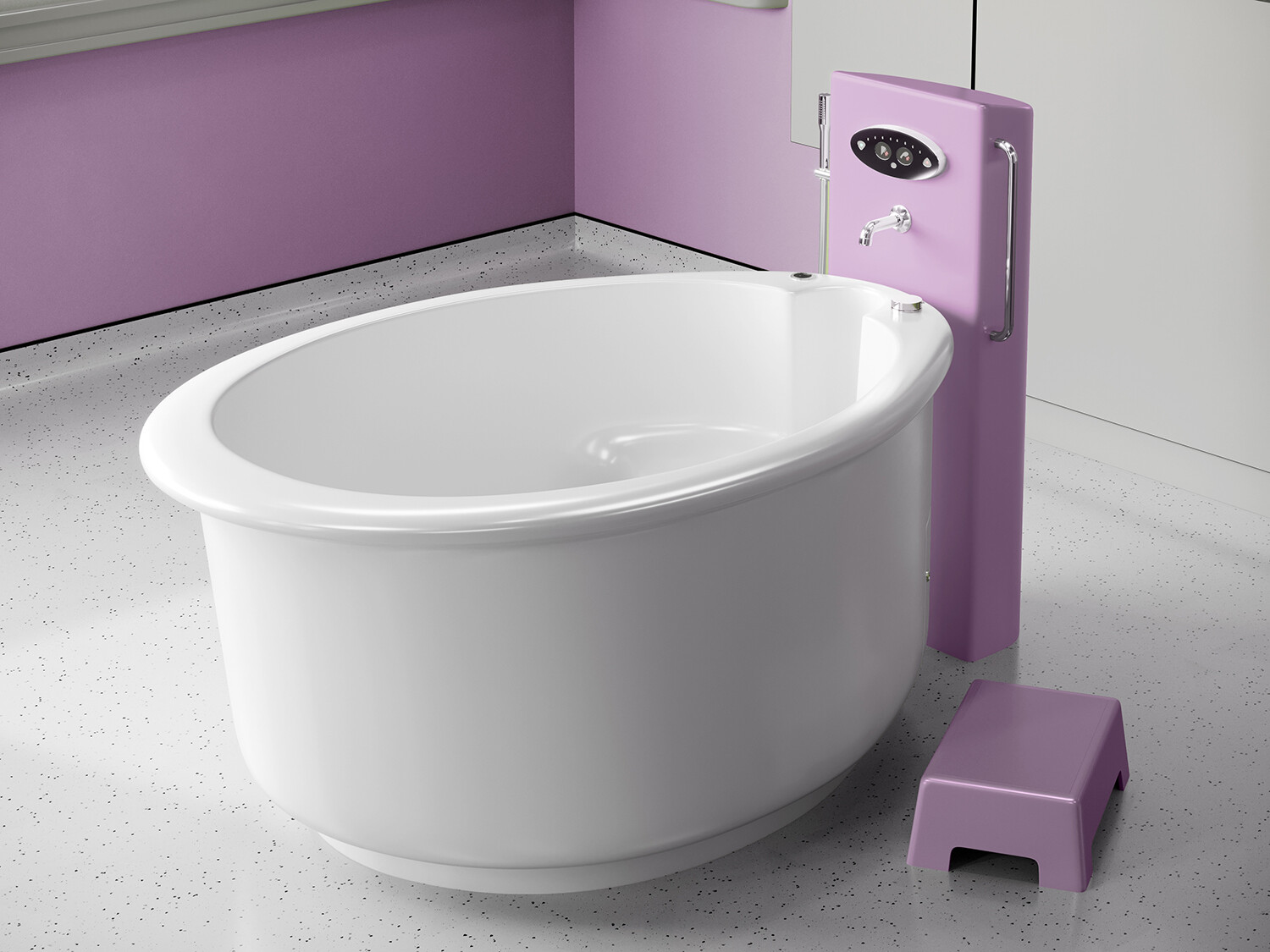
To solve this problem we developed the Water Column – a bespoke design concept that separates the plumbing from the pool to optimise hygiene and water safety and provide crucial support for mothers and midwives.
It’s highly utilitarian, sleek ergonomic design complements the look and usability of our pools .
Superior material results in superior safety, value and performance
Water safety / infection control warning re: fittings and features commonly found on birthing pools

